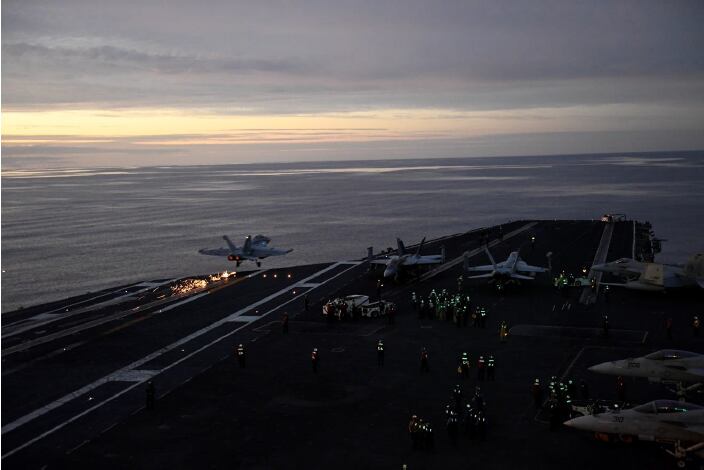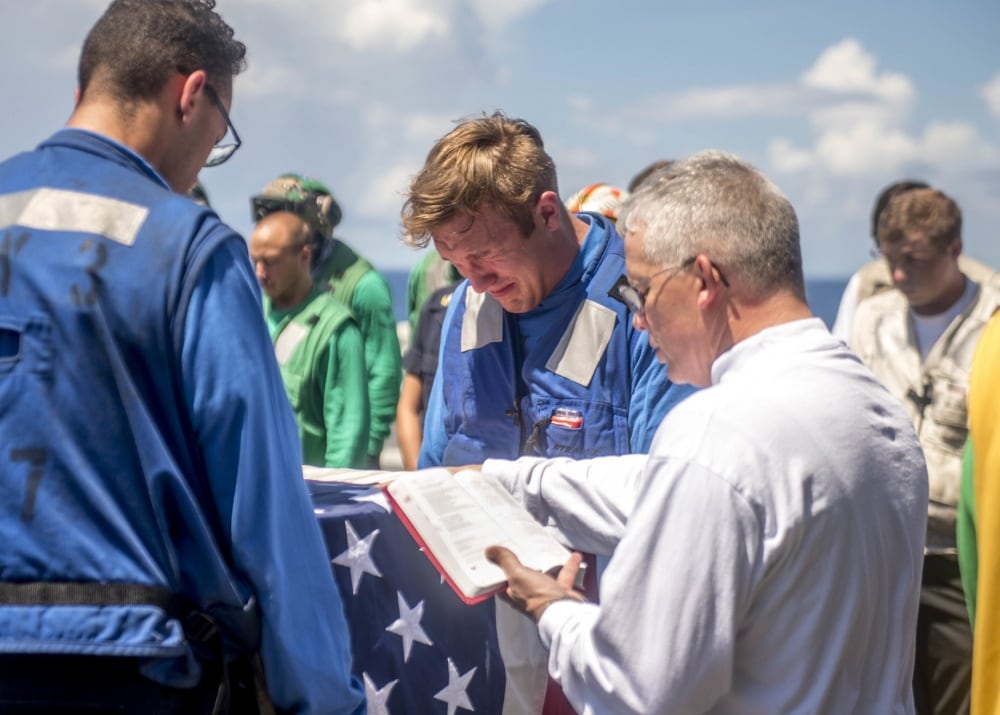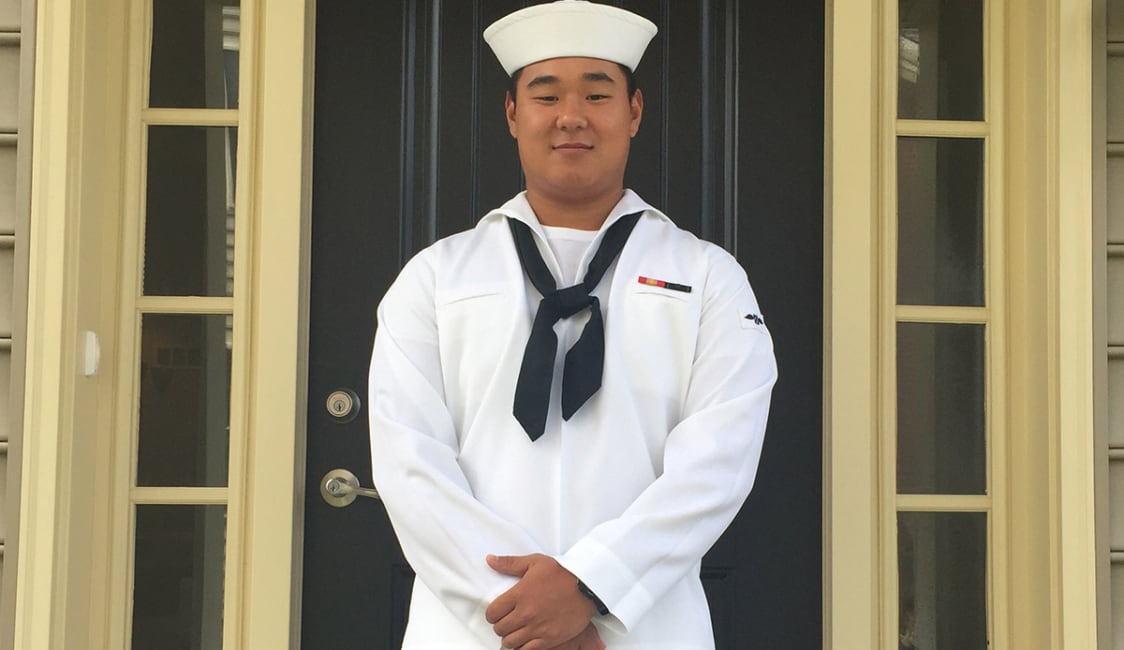Considered a model sailor by shipmates on the aircraft carrier George H.W. Bush, a junior airman died in 2018 after he lost situational awareness and was struck by the spinning propeller of an E-2 Hawkeye, according to a command investigation obtained by Navy Times.
The probe into the Sept. 17, 2018, death of 21-year-old Aviation Boatswain’s Mate (Handling) Airman Apprentice Joseph Min Naglak offers a sobering reminder of the dangers faced daily by deck crews.
“I have replayed the events in my head to see where we, as a team, could have avoided this tragic accident,” said one sailor whose name is redacted in the report. “The deck was not packed. Crews were not moving excessively fast. Leadership, at all levels, had emphasized safety.”
RELATED

The tragedy occurred while George H.W. Bush was conducting carrier qualifications in the Atlantic Ocean for twin-prop Hawkeye and C-2 Greyhound crews.
Just before 5 p.m., Naglak moved to secure a parked Hawkeye.
After receiving chock and chain signals, Naglak and another unnamed sailor walked between the starboard spinning prop of the mishap aircraft and the port spinning propeller of another aircraft, the report states.
Naglak properly approached the mishap Hawkeye’s starboard tires at a 90-degree angle to avoid the propeller.
He chocked the tires and then attempted to chain the aircraft to the nearby pad eye — a metal loop through which a plane can be secured — forward of the plane.
But “instead of walking back at a 90 degree angle perpendicular to the aircraft, he walked at an angle in the direction of the starboard propeller,” the investigating officer wrote.
Another sailor saw Naglak "looking back down toward the main mount behind him,”searching for the appropriate pad eye, the investigator determined. “He was very near the spinning starboard propeller and the (other sailor) yelled at him to stop walking, but ABHAN Naglak did not respond.”
Naglak was glancing down and to the left when the propeller struck him.
Officials later described Naglak’s death as “nearly instantaneous,” meaning the promising young sailor likely did not suffer.
While the report found that all rules and regulations were followed prior to the mishap, the investigating officer noted the challenges faced by “flight deck personnel to maintain the safety arcs on multiple spinning aircraft propellers at the same time, especially when two operating aircraft are parked next to each other.”

Shipmates described Naglak as a “model sailor” who hadn’t been in the service long but was already ahead of his peers when it came to gaining in-rate and Navy-wide qualifications.
He had an “exceptional work ethic” and was ready to advance to truck driver on the flight deck.
“Sailors and peers looked up to ABHAN Naglak and considered him a friend and good shipmate,” the investigator wrote. “Everyone who knew him believed he was a happy person.”
Naglak’s sister, Stephanie Naglak, said her brother joined the military to honor their grandfathers, who both had military ties.
“As someone adopted from South Korea as an infant, Joseph’s goal was to give back to a country that had given so much to him,” she told Navy Times.
“Life will always be a little bit darker without him in it. He is missed, and loved, and that will never change.”
Geoff is the managing editor of Military Times, but he still loves writing stories. He covered Iraq and Afghanistan extensively and was a reporter at the Chicago Tribune. He welcomes any and all kinds of tips at geoffz@militarytimes.com.





